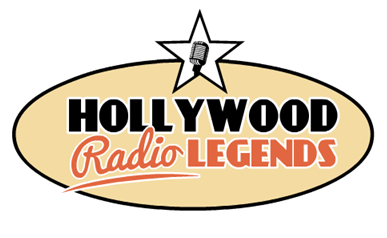
You wouldn’t know it by watching his movies today, but Cary Grant was British. Born and raised in Bristol, his solid ambition and willful personality gained him entrance to a troupe of stage comedians where he learned the art of pantomime – one of his distinguishing characteristics in screwball comedies when he took up residence in America. If anyone questioned his loyalty to his homeland during the span of a screen career in Hollywood, take note: he devoted his entire salary for The Philadelphia Story (1940) to the British war effort.
Mae West saw something in Grant, and Paramount Pictures signed him to a studio contract, pairing him almost immediately with their leading players. In The Woman Accused (1932), Grant played the handsome hero who wielded a blacksnake whip on the evil gangster and key witness against his fiancée, played by Nancy Carroll, giving film fans satisfaction at the manner in which a mobster should receive retribution.
Cary Grant’s real name was Archibald Leach and it was the studio heads at Paramount who gave him his immortal stage name. His initials (C.G.) were an inversion of their biggest star, Gary Cooper; some suspect that the studio chose the name because Clark Gable shared the same initials.
By 1933, the actor began expressing how irksome he found it always playing a charming, cultured gentleman on the screen. He yearned to play a villain, but his good looks and long-term contract with Paramount Pictures denied him the chance. It was in 1937 that Grant proved he could negotiate the terms of his contract by signing a four-year deal with Columbia Pictures; it included a commitment of two movies per year and a clause that permitted the actor to freelance outside of those.
He despised his performance in Arsenic and Old Lace (1944), claiming it was way too over the top, and that it was his worst film. He donated his entire salary from the movie — $100,000 — to U.S. war relief (in June of 1942 he had become an American citizen).
In between filming movies, he enjoyed performing on network radio. Among his favorites was the CBS anthology, Suspense, which gave him the opportunity to play the role of murderers and embezzlers. On November 16, 1950, Grant would star in one of the best episodes of the series, “On a Country Road,” which pitted Grant’s character against an escaped lunatic armed with a meat-cleaver (hear this 30-minute episode free — details below). Being an audio medium, radio also provided Grant the opportunity to follow a rule his father passed down to him: “Let them see you and not the suit. That should be secondary.” Under contract with Paramount and Columbia Pictures, Grant’s radio appearances were subject to approval from the film studios and, for a time, he was limited to four radio appearances a year.
Reminiscent of hundreds of movie stars before him, Grant starred in many of the most prestigious radio series featuring dramatizations of his films, The Gulf Screen Guild Theater and The Lux Radio Theater included. Grant was offered roles on other radio series, but the studios restricted him to only the shows with the highest prestige.
In 1942, Grant was one of the first Hollywood celebrities to appear on Command Performance, a series of shortwave transmissions for the benefit of troops stationed overseas. During one episode of the show, Grant said that when the Actors Guild learned of Grant’s participation, they attempted “legal intimidation” in an effort to convince Grant to ask for payment for said services. The actor explained that he already signed a contract with the War Department in exchange for time and talent, and it took a phone call from the War Department to remind the Actors Guild of their arrangement. “They say I am too old to go into service,” Cary Grant told a reporter. “If I cannot provide entertainment for the troops through the electrical transcription service, I will take the show on the road.”
He was a man of his word. Throughout the spring of 1943, Grant teamed with Don Barclay to revive vaudeville skits they did 15 years prior when Grant, then virtually unknown, played straight man to Barclay, who was then a vaudeville name. It was Barclay who gave Grant his first job in showbiz and actually applied his first makeup. The comedy duo, ala Abbott and Costello, wrote fresh material tailored for the times and the troops.
In early 1944, Grant and Barclay made a second tour of Camp shows. The cheers and accolades from troops reminded Grant the importance of audience reaction – and interaction – just as rewarding as Bob Hope had discovered years before. “I tell you, in films, one doesn’t really meet the audience,” Grant remarked during an appearance on Kraft Music Hall. “You don’t get the impact of your audience, whereas when you are out in the public, you do.” In March of 1944, Grant and Barclay began making radio appearances together, performing their vaudeville routines on such series as Duffy’s Tavern and the Kraft Music Hall.
By 1951, network radio was invaded by Hollywood husband-wife teams, spawned by the popular Halls of Ivy series starring Ronald and Benita Colman. Humphrey Bogart and Lauren Bacall produced their own syndicated series, Bold Venture, contracted for distribution with ZIV. It was about this time that Cary Grant and his real-life-wife, Betsy Drake, starred in a Don Sharpe-packaged radio series, Mr. and Mrs. Blandings, adapted from Grant’s earlier screwball film comedy, Mr. Blandings Builds His Dream House. The radio series was an expensive venture for its sponsor, Trans-World Airlines, who plunked down $9,500 per weekly half hour. Critics were quick to claim the series modeled the suburban tribulations of Fibber McGee and Molly, according to Radio Mirror magazine. The first episode, for example, featured Grant and Drake in their new home being threatened with eviction by the state, which planned to run a super-highway through their living room. Another episode focused on Mr. Blandings’ penchant for heavy spending in hardware stores and Blandings and a client taking their wives trout fishing. As was to be expected, the women got the better of the bargain and showed up the men.
Cary Grant attempted to play the role on radio with a level of sophistication, futile for a modern-day situation comedy. Mr. and Mrs. Blandings lasted only six months, from January to June 1951. The actor was paid $3,000 a week for playing the role, but during tax season, Grant learned that he would end up with just $79 per broadcast after taxes. Grant’s decided to leave. Rather than cast replacements, TWA decided to drop the radio series altogether.
Throughout much of the 1950s, Grant suffered from mid-life crisis. His marriage to Betsy Drake was strained, and he suspected a third divorce was around the corner. He believed he was too old to play a romantic lead on the silver screen and sought the chance to play the role of a father. Recognized as one of the first actors in Hollywood to work freelance without the stability of a studio contract, his decision paid off when his agent negotiated salaries for him unheard of under the studio contract system. He was planning to retire by mid-decade until To Catch a Thief (1955) was a box office success. His salary for That Touch of Mink (1962) was $4 million… impressive considering the $450 a week he had earned while under contract to Paramount. He followed That Touch of Mink with just three theatrical movies before retirement, turning down many offers including the chance to play the screen’s first James Bond. Ian Fleming had modeled the James Bond character with Cary Grant partially in mind, but Grant declined the role when casting began for Dr. No (1962). Perhaps Cary Grant phrased his withdrawal best: “Hollywood is very much like a streetcar. Once a new star is made and comes aboard, an old one is edged out of the rear exit. There’s room for only so many and no more.”
Carl Amari is the host of the nationally-syndicated nostalgia radio series Hollywood 360. Amari is also the curator of The Classic Radio Club.
Featured image: RKO publicity still of Cary Grant from Suspicion (public domain, Wikimedia Commons)
Become a Saturday Evening Post member and enjoy unlimited access. Subscribe now





Comments
I’ve never understood Cary Grant’s abhorrence of his performance in Arsenic and Old Lace. I think it’s perfect. The movie is farce, after all. But it’s as dark as farce can get. Mortimer Brewster is sane to be as aghast as he is, then as frantic, then, essentially, reduced to helpless, childish burblings of hysteria when he’s bound and gagged.
Of course, his performance lacks subtlety. Any of us in the poor man’s position in real life would do well to remain no more out of control than Mortimer is. I can’t imagine that a traditionally calibrated comical performance of the kind that Grant was a past master of would have made the picture even half as funny as it is.
Cary Grant was just one of many famous British Hollywood film actors, the best known are Charles Chaplin, Bob Hope, Sean Connery, Michael Caine, Laurence Olivier, Boris Karloff, Lesley Howard, Ronald Colman and Elizabeth Taylor, the American competition for roles was certainly tough since their ranks included James Stewart (Scots-Irish ancestry) Jack Lemmon, Paul Newman, John Wayne, Humprey Bogart, Gary Cooper, Fred Astaire, Gene Kelly, Spencer Tracy, Tyrone Power and James Cagney, you then had the likes of Peter Lorre and Bela Lugosi with the Oscar going to Jack Elam, who seems to have appeared in every film made and William Demarest (Al Jolson’s Manager) both mainstay figures in Old Hollywood, the Queen of Hollywood was Susan Hayward who graced every film she appeared in. I loved them all.
I’ve been a fan for decades and enjoy how Cary Grant
cycles into the different seasons from Paramount to Classic Movies. During the Christmas season he’ll pop up as an angel in “The Bishop’s Wife”,trying to manage the lunacy of St. Timothy’s Church goers; to raise funds for a new Cathedral. “Father Goose” gave him a chance to serve in the on-screen war. His radio days helped keep him within ear-shot of his fans so they couldn’t forget him. His age didn’t matter in the 50’s and maturity helped him win over a young princess-to-be (Grace Kelly) in “To Catch a Thief”.
I was a fan of the Duffy’s Tavern radio show “Where the elite meet to eat”. Hard to imagine Cary Grant exchanging one-liners with Archy the manager.
Well, even if you’re Cary Grant it didn’t mean you were free of life’s nuisances and headaches. I liked how he negotiated his contracts to give himself the freedom to do other things. I saw ‘Arsenic and Old Lace’ last year, and felt he was being too hard on himself. But we usually are our own harshest critics. Donating his $100k salary from it to the American war effort was extremely generous.
I’m glad he got the chance to play out the type of roles on radio he was denied on film, and kind of toggled both in re-inventing himself as needed. Even so, he had a tough time in the 50’s until ‘To Catch a Thief’ was a big box office comeback in ’55. We mustn’t forget ‘North by Northwest’ in 1959 either.
Although he turned down the role of James Bond for ‘Dr. No’, I think he would have been excellent. To put that into perspective, he only would have been a few years older than Daniel Craig is now.